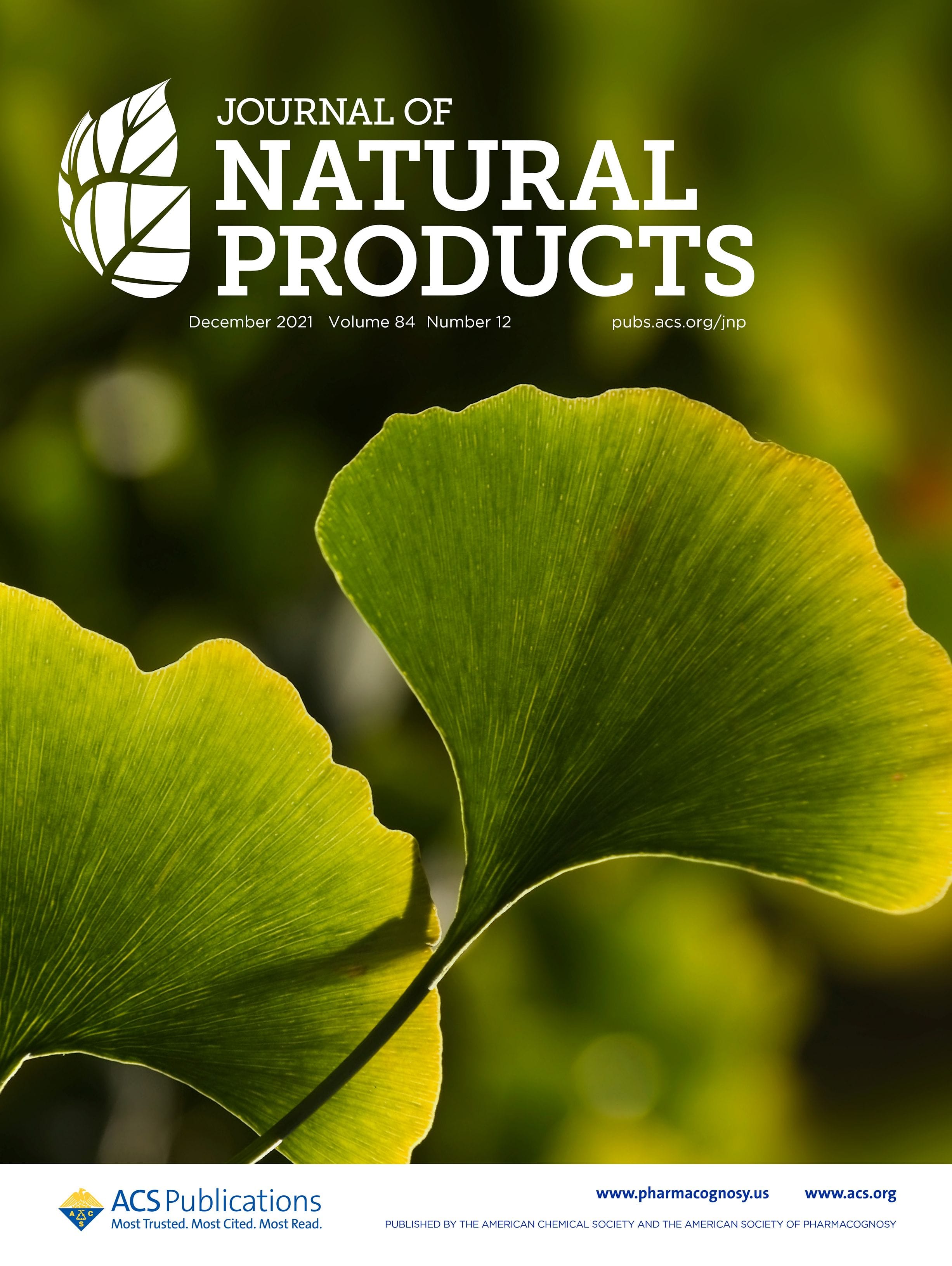We invite you to explore the 20 most read chemistry articles in 2022 across all ACS Publications journals.

There are many ways to measure an article’s success after it is published. One helpful method of evaluating a scientific publication’s reach and influence is by looking at how many times it has been read. We invite you to explore the 20 most read chemistry articles in 2022 across all ACS Publications journals.*
If you are interested in publishing in an ACS journal, click below to learn more about how your research can further our commitment to being the “Most Trusted. Most Cited. Most Read.”
Cannabinoids Block Cellular Entry of SARS-CoV-2 and the Emerging Variants
Richard B. van Breemen, Ruth N. Muchiri, Timothy A. Bates, Jules B. Weinstein, Hans C. Leier, Scotland Farley, and Fikadu G. Tafesse
DOI: 10.1021/acs.jnatprod.1c00946
Outside the Safe Operating Space of a New Planetary Boundary for Per- and Polyfluoroalkyl Substances (PFAS)
Ian T. Cousins, Jana H. Johansson, Matthew E. Salter, Bo Sha, and Martin Scheringer
DOI: doi/10.1021/acs.est.2c02765
A Practical Beginner’s Guide to Cyclic Voltammetry
Noémie Elgrishi, Kelley J. Rountree, Brian D. McCarthy, Eric S. Rountree, Thomas T. Eisenhart, and Jillian L. Dempsey
DOI: 10.1021/acs.jchemed.7b00361
Outside the Safe Operating Space of the Planetary Boundary for Novel Entities
Linn Persson, Bethanie M. Carney Almroth, Christopher D. Collins, Sarah Cornell, Cynthia A. de Wit, Miriam L. Diamond, Peter Fantke, Martin Hassellöv, Matthew MacLeod, Morten W. Ryberg, Peter Søgaard Jørgensen, Patricia Villarrubia-Gómez, Zhanyun Wang, and Michael Zwicky Hauschild
DOI: 10.1021/acs.est.1c04158
Improved Stability of Inverted and Flexible Perovskite Solar Cells with Carbon Electrode
Vivek Babu, Rosinda Fuentes Pineda, Taimoor Ahmad, Agustin O. Alvarez, Luigi Angelo Castriotta, Aldo Di Carlo, Francisco Fabregat-Santiago, and Konrad Wojciechowski
DOI: 10.1021/acsaem.0c0070
Operando Transmission Electron Microscopy Study of All-Solid-State Battery Interface: Redistribution of Lithium among Interconnected Particles
Shibabrata Basak, Vadim Migunov, Amir H. Tavabi, Chandramohan George, Qing Lee, Paolo Rosi, Violetta Arszelewska, Swapna Ganapathy, Ashwin Vijay, Frans Ooms, Roland Schierholz, Hermann Tempel, Hans Kungl, Joachim Mayer, Rafal E. Dunin-Borkowski, Rüdiger-A. Eichel, Marnix Wagemaker, and Erik M. Kelder
DOI: 10.1021/acsaem.0c00543
Practical Indicators for Risk of Airborne Transmission in Shared Indoor Environments and Their Application to COVID-19 Outbreaks
Z. Peng, A.L. Pineda Rojas, E. Kropff, W. Bahnfleth, G. Buonanno, S.J. Dancer, J. Kurnitski, Y. Li, M.G.L.C. Loomans, L.C. Marr, L. Morawska, W. Nazaroff, C. Noakes, X. Querol, C. Sekhar, R. Tellier, T. Greenhalgh, L. Bourouiba, A. Boerstra, J.W. Tang, S.L. Miller, and J.L. Jimenez
DOI: 10.1021/acs.est.1c06531
NMR Chemical Shifts of Trace Impurities: Industrially Preferred Solvents Used in Process and Green Chemistry
Nicholas R. Babij, Elizabeth O. McCusker, Gregory T. Whiteker, Belgin Canturk, Nakyen Choy, Lawrence C. Creemer, Carl V. De Amicis, Nicole M. Hewlett, Peter L. Johnson, James A. Knobelsdorf, Fangzheng Li, Beth A. Lorsbach, Benjamin M. Nugent, Sarah J. Ryan, Michelle R. Smith, and Qiang Yang
DOI: 10.1021/acs.oprd.5b00417
Addressing the Challenge of Carbon-Free Energy
Richard Eisenberg
DOI: 10.1021/acsenergylett.8b00889
NMR Chemical Shifts of Trace Impurities: Common Laboratory Solvents, Organics, and Gases in Deuterated Solvents Relevant to the Organometallic Chemist
Gregory R. Fulmer, Alexander J. M. Miller, Nathaniel H. Sherden, Hugo E. Gottlieb, Abraham Nudelman, Brian M. Stoltz, John E. Bercaw, and Karen I. Goldberg
DOI: 10.1021/om100106e
Degradation Rates of Plastics in the Environment
Ali Chamas, Hyunjin Moon, Jiajia Zheng, Yang Qiu, Tarnuma Tabassum, Jun Hee Jang, Mahdi Abu-Omar, Susannah L. Scott, and Sangwon Suh
DOI: 10.1021/acssuschemeng.9b06635
Cats’ Internal Exposure to Selected Brominated Flame Retardants and Organochlorines Correlated to House Dust and Cat Food
J. Norrgran Engdahl, A. Bignert, B. Jones, I. Athanassiadis, Å. Bergman, and J. M. Weiss
DOI: 10.1021/acs.est.6b05025
The Mole and Amount of Substance in Chemistry and Education: Beyond Official Definitions
Carmen J. Giunta
DOI: 10.1021/ed5007376
Methane and NOx Emissions from Natural Gas Stoves, Cooktops, and Ovens in Residential Homes
Eric D. Lebel, Colin J. Finnegan, Zutao Ouyang, and Robert B. Jackson
DOI: 10.1021/acs.est.1c04707
Lipid Nanoparticles─From Liposomes to mRNA Vaccine Delivery, a Landscape of Research Diversity and Advancement
Rumiana Tenchov, Robert Bird, Allison E. Curtze, and Qiongqiong Zhou
DOI: 10.1021/acsnano.1c04996
Featured in Axial: "Recent Advances in mRNA Vaccines"
How To Correctly Determine the Band Gap Energy of Modified Semiconductor Photocatalysts Based on UV–Vis Spectra
Patrycja Makuła, Michał Pacia, and Wojciech Macyk
DOI: 10.1021/acs.jpclett.8b02892
Amyloidogenesis of SARS-CoV-2 Spike Protein
Sofie Nyström and Per Hammarström
DOI: 10.1021/jacs.2c03925
Synthesis and Characterization of 5-MeO-DMT Succinate for Clinical Use
Alexander M. Sherwood, Romain Claveau, Rafael Lancelotta, Kristi W. Kaylo, and Kelsey Lenoch
DOI: 10.1021/acsomega.0c05099
Deep Eutectic Solvents (DESs) and Their Applications
Emma L. Smith, Andrew P. Abbott, and Karl S. Ryder
DOI: 10.1021/cr300162p
How Comparable Are Sodium-Ion Batteries to Lithium-Ion Counterparts?
K. M. Abraham
DOI: 10.1021/acsenergylett.0c02181
Featured in Axial: "Sodium: Leading the Charge Toward Better Batteries"
*This list was not chosen by the journals’ editors and should not be taken as a “best of” list, but as another perspective on where the chemistry community is recently allocating their attention.
